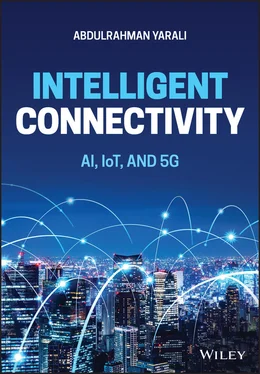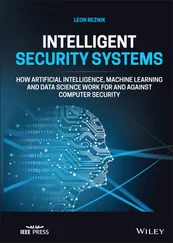Establishing alliances and partnerships is a key factor since it helps their customers despite competitive situations. Some of the partnerships established in the past include Citrix and Microsoft, and another instance is where Google and Salesforce launched partnerships (Deloitte 2015). These partnerships aim to enable the organizations to provide comprehensive solutions to various business and IT‐related challenges to the customers. The main attributes of these strategic partnerships include enhancing customer services and response time, a better understanding of business goals and objectives, support services after selling, the long‐term viability of the organizations, enhancing knowledge in the product portfolio, and creating an ideal insight and growing expertise in the technology (Afshar 2019). The presence of alliances and partnerships has been part of human life for many decades. Therefore, it is crucial to establish a strategic partnership in the business world since it could help an organization become innovative and create some of the best solutions.
There has been a tremendous growth of partnerships. They are driven by the benefits of sharing risks and pooling resources, technology convergence, and deconstruction of the industry where knowledge is diffused. Once these partnerships have been established, the partners can acquire new capabilities in their line of business. Thus, it is a win–win situation for both entities. These partnerships should pursue innovativeness; in this case, none of the partners should innovate alone. They should work together as a team and come up with solutions together. The partners involved should understand that none of them has a lock on user preferences since all consumers are moving targets (Deloitte 2015). Partnerships are meant to establish superior knowledge capital and an environment where there is a robust exchange of information to build long‐lasting solutions. As partners, organizations should provide a great experience to their customers and not value the exchange. They should also strike the ideal balance between scale and customization in the areas of their operations (Afshar 2019). Another essential strategy is that the involved organizations should treat these partnerships to achieve the intended outcomes.
1.3 AI‐Fueled Organizations
AI has experienced tremendous growth due to the numerous advantages it provides to different business entities. In today's world, organizations are implementing AI as they look forward to implementing machine learning capabilities over the existing frameworks of data management (Afshar 2019). Over the next few years, it is expected that the organization will move towards an autonomous intelligence where the majority of the procedures will be digitized and robotized to enhance performance. The majority of the organizations have been harnessing the full potential of AI, and they are exploring the enterprise opportunities presented by this form of technology (Tredinnick 2017). In the next few years, organizations are determined to ensure their move to an AI‐fueled environment. Thus, they need to rethink how people and machines interact within a working environment. AI is expected to change businesses, and, in this case, organizations will experience positive growth since the running costs are expected to decrease with time (Tredinnick 2017). Therefore, it is essential for management teams to consider machine learning and other necessary technological tools to enhance the core business processes and operations in different enterprises. Deployment of these specialized tools is expected to improve data‐driven decision‐making processes since it will offer a new contribution and strategic business models (Norton, Littmann, and Prabhu 2019).
In the coming years, organizations are expected to move towards autonomous intelligence, where various processes in the organization will be digitized and automated. As a result, machines, bots, and their systems will act directly upon the system's intelligence. The evolution of AI has undergone various processes (Indrasen 2017). The first stage was assisted intelligence, where humans comprehended the data and generated their insights. The second stage is augmented intelligence, where machine learning provides an augment based on human decisions. The third and the final stage is autonomous intelligence; it is the most advanced, and this is the level where AI decides and executes autonomously. Through AI, organizations have experienced tremendous growth since the management teams can positively impact the organization. Due to various business sectors' demands, organizations are looking beyond the discrete initiatives to implement AI since it has proven to be one of the essential strategies of enhancing business performance (Indrasen 2017). The majority of the organizations have been scanning their operations and implementing AI since the initiatives involved could benefit the entire organization.
In the next two decades, the number of businesses that will adapt to implement AI will increase significantly since they can use all the cognitive technologies to achieve and implement their strategic goals (Tredinnick 2017). It is essential to note that the role of AI in an organization is to develop vital cognitive tools and strategies that are meant to promote their performance. The use of AI has led to the deployment of various system models such as cloud‐native, a platform that will become one of the biggest operating systems, a packet‐adjunct model, and the open‐algorithm model, developed to meet specific needs in different business platforms (Harris 2011). In many organizations, it is essential to realize data management, which has led to a growth in AI‐fueled organizations. Therefore, it is ideal for establishing an environment that will promote dynamic data governance, storage, and architecture. AI will offer an environment where data is processed, analyzed, and acted upon at a high rate and speed. Even though organizations may consider deploying AI tools, there is a need for organizational and cultural changes. This means that employees should gather more skills to analyze, model, and develop skills to enhance their interaction with this emerging technology in the business world. People speculate that in the next two decades, AI will replace the human workforce. However, it is expected that augmented intelligence will boost instead of replacing human skills (EDICOM 2018). In this case, critical and emotional intelligence and value judgments among the people is expected to grow.
In the last few years, the buzz over AI has been on the rise since penetrating C‐suites of various organizations in the world. As a result, there has been a growth in AI investment, and businesses are adopting this technology to enhance their performance (Afshar 2019). It is expected that AI success in different organizations will be numerous and diverse since it helps them perform better. Even though not every organization has implemented AI, the external investments in technology have been tripling since 2013 (Deloitte 2015). Some organizations are using AI in parts of their organization. Still, in two decades, it is expected that the majority of the companies will adopt the technology to be fully utilized in the entire organization. The five AI technology categories include robotics, computer vision, language, machine learning, and virtual agents (Harris 2011). Different organizations have implemented these categories of technologies in their departments based on their needs and the necessity of usage. Therefore, AI will experience tremendous growth in two decades since businesses are expected to tap into this technology to achieve their goals and maximize their income (Tredinnick 2017).
1.4 Connectivity of Tomorrow
The number of network‐connected devices is rising every day, and thus the implication of both wired and wireless technologies is critical in providing the future of the digital economy. The increase of new connectivity has prompted the business to adopt the newest technologies to run their operations (Prysmian 2017). Growth in fiber cables means that organizations will continue to invest in various infrastructures to deal with their connectivity needs, even in future decades. Both private and governmental organizations are investing heavily in technology since the current trends are meant to make organizations better in terms of digital infrastructures (Conan 2018). The recent trends and changes in technology mean that business is based on fiber‐connected backbone networks since service providers are working towards achieving future‐proof networks. In the next two decades, organizations will have the best services for running their business entities. In the future, demand for quality and excellent network services will increase, and thus organizations will focus on reliable and fault‐proof networks (Tempels 2016). The connectivity of tomorrow is expected to become even better since service providers are innovative and are determined to design and develop solutions that will meet customer's needs.
Читать дальше












